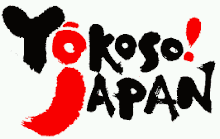
While a climb to the summit is not a simple hike and it is tough - when you finally reach the summit it will be well worth it. I recently climbed to the summit and thought that this first hand account might offer some tips and encouragement to those 'still on the fence' about attempting a climb.
Any time that you mention that you are planning to climb Mt. Fuji to a friend in Japan, you will get a Pavlovian response mentioning the famous quote that " A wise person climbs Mt. Fuji once, only a fool would climb it twice'. Well, in the vain of full disclosure this was my second climb - the first climb was when I was 25 and this more recent climb was at the ripe old age of 40 - and I can say that it was excillerating, fatiguing and inspiring; however, I've no delusional plans to make a 3rd climb to the peak. Here is a photo of yours trully after making it to the summit after climbing all night to see the sunrise.

As you leave the Fifth Station area, you will head to your right towards a flat gravel path with side retaining walls, this is the easy part until you reach the rock path with a metal chain where you will begin the 'real climb'. The chain is there so as to prevent you from falling off the path, as there are no lights, I strongly encourage you to bring a flashlight or a headlamp.



